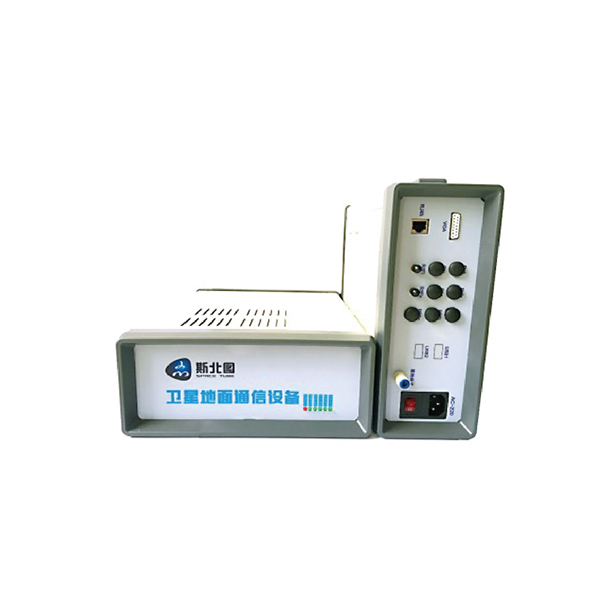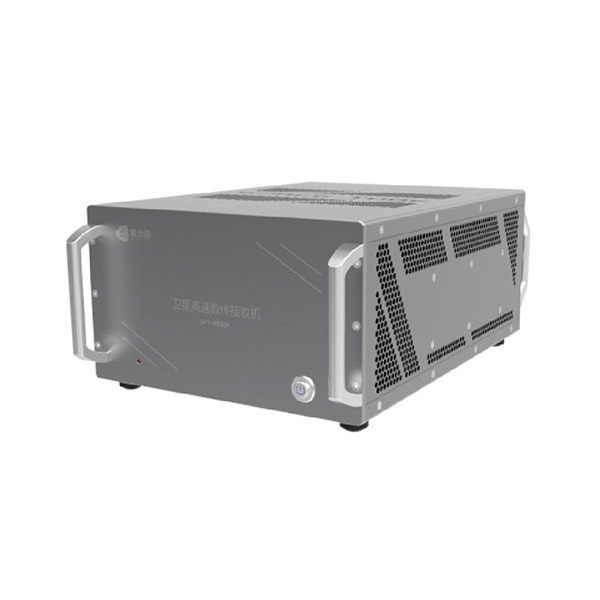Forecast system ◊ Satellite data acquisition system combined with GPS
Creation date:2024-08-28
source:百度百科
By 1992, 7K Libo's flood prevention and flood forecasting system had deployed more than 1700 data acquisition platforms in more than 20 key flood control areas and 150 large reservoirs, including Sanhuajian of the Yellow River, Jingjiang section of the Yangtze River, Zhengyangguan of the Huaihe River, Guanting Reservoir in Beijing, the Taihu Lake Lake, etc. In addition to developing data acquisition system channels in Fengyun 1, Fengyun 2 and China Pakistan Earth Resources Satellite, Aerospace Science and Technology Group Co., Ltd. had also developed prototype data acquisition platforms, and developed C-band communication satellite data acquisition platform systems, which have been used in the Taizi River basin in Liaoning Province.
China has a territory of 9.6 million square kilometers, a sea area of over 3 million square kilometers, a coastline of 32000 kilometers, and more than 6500 islands. At the same time, it is a country with frequent natural disasters, a large population, and relatively insufficient resources. It urgently needs to investigate and manage resources such as oceans, forests, and minerals. Monitoring, forecasting, and satellite data collection systems for natural disasters are widely used internationally and are very suitable for China's national conditions. It is an effective way with low investment and quick results.
China is a country with a high incidence of earthquakes. Nearly a thousand conventional earthquake prediction stations and a GPS crustal relative displacement measurement network have been established throughout the country. The use of satellite data acquisition system technology can strengthen the connection between earthquake prediction stations and improve the timeliness of predictions. China's ocean monitoring and management, except for more than 60 ocean stations and a small number of maritime surveillance aircraft arranged along the coastline, have basically no monitoring and management methods for deep and far seas. It is urgent to establish and improve corresponding ocean monitoring and management facilities to safeguard the legitimate rights and interests of China's oceans. China's forest area is about 1.3 million square kilometers, and the annual forest fire damage rate is 8.6%. It is urgent to establish a real-time, nationwide fire monitoring and prediction system, satellite data acquisition system, and... Combined with GPS, it can also track and monitor rare animals, China currently has more than 200000 square kilometers of flood control embankments and 8300 various reservoirs. At the same time, it is a country with a shortage of freshwater resources, with a per capita freshwater possession of only one seventh of the world average. By using satellite data collection systems, the efficiency of flood control dispatch and command systems and water resource utilization can be improved, and an automatic hydrological data monitoring network can be established to timely and accurately forecast floods. In addition, using satellite data acquisition systems, automated monitoring and management of oil and gas production, storage, and transportation can be carried out. Environmental protection departments can use satellite data acquisition systems to establish monitoring systems for air and water pollution, improve monitoring timeliness, and strengthen real-time supervision, inspection, and management of pollution sources. The satellite data acquisition system is also of great significance to the military and national defense construction. In order to prepare for navigation and war, the Mei army must collect real-time sea condition data. The meteorological conditions of the data acquisition platform are the guarantee system for air force flight operations. By using the satellite data acquisition system, relevant data can be provided in a timely and accurate manner. Field troops are equipped with GPS data collection platforms on military vehicles, allowing the headquarters to collect real-time movement status of the troops and provide a basis for command decisions.
The construction of satellite data acquisition systems will bring significant economic benefits. As far as Meiyang is concerned, Meiyang disasters occur on average more than ten times a year in China. After 2000, the direct economic losses caused by marine disasters will reach 15 billion yuan per year. The use of satellite data acquisition systems can improve the timeliness of marine disaster forecasting. According to foreign calculations, forecasting one day in advance can reduce economic losses by about 6%. On average, there are 15000 forest fires per year in China, with a cumulative affected area of over 960000 hectares per year. Forest pests and diseases cause an annual loss of over 20 million cubic meters of forest resources. In water resource management, storing more water can not only generate electricity and aquaculture, but also directly increase economic benefits for the 7K benefit department.
With the development of aerospace technology, satellite resources are becoming increasingly abundant. In addition to Fengyun-2 and Dongfanghong-3, there will be more than 300 transponders available for use in China's field in the near future. It can be said that the conditions for developing and constructing satellite data acquisition systems are mature, and we can establish our own data acquisition industry to meet the needs of various fields such as earthquakes, agriculture, oceanography, petroleum, environment, and 7K technology. The use of satellite DCS to collect dynamic information on the atmosphere, hydrosphere, biosphere, and lithosphere in China can also provide information and data for the construction of China's information highway, and provide a basis for high-level national decision-making.
China has a territory of 9.6 million square kilometers, a sea area of over 3 million square kilometers, a coastline of 32000 kilometers, and more than 6500 islands. At the same time, it is a country with frequent natural disasters, a large population, and relatively insufficient resources. It urgently needs to investigate and manage resources such as oceans, forests, and minerals. Monitoring, forecasting, and satellite data collection systems for natural disasters are widely used internationally and are very suitable for China's national conditions. It is an effective way with low investment and quick results.
China is a country with a high incidence of earthquakes. Nearly a thousand conventional earthquake prediction stations and a GPS crustal relative displacement measurement network have been established throughout the country. The use of satellite data acquisition system technology can strengthen the connection between earthquake prediction stations and improve the timeliness of predictions. China's ocean monitoring and management, except for more than 60 ocean stations and a small number of maritime surveillance aircraft arranged along the coastline, have basically no monitoring and management methods for deep and far seas. It is urgent to establish and improve corresponding ocean monitoring and management facilities to safeguard the legitimate rights and interests of China's oceans. China's forest area is about 1.3 million square kilometers, and the annual forest fire damage rate is 8.6%. It is urgent to establish a real-time, nationwide fire monitoring and prediction system, satellite data acquisition system, and... Combined with GPS, it can also track and monitor rare animals, China currently has more than 200000 square kilometers of flood control embankments and 8300 various reservoirs. At the same time, it is a country with a shortage of freshwater resources, with a per capita freshwater possession of only one seventh of the world average. By using satellite data collection systems, the efficiency of flood control dispatch and command systems and water resource utilization can be improved, and an automatic hydrological data monitoring network can be established to timely and accurately forecast floods. In addition, using satellite data acquisition systems, automated monitoring and management of oil and gas production, storage, and transportation can be carried out. Environmental protection departments can use satellite data acquisition systems to establish monitoring systems for air and water pollution, improve monitoring timeliness, and strengthen real-time supervision, inspection, and management of pollution sources. The satellite data acquisition system is also of great significance to the military and national defense construction. In order to prepare for navigation and war, the Mei army must collect real-time sea condition data. The meteorological conditions of the data acquisition platform are the guarantee system for air force flight operations. By using the satellite data acquisition system, relevant data can be provided in a timely and accurate manner. Field troops are equipped with GPS data collection platforms on military vehicles, allowing the headquarters to collect real-time movement status of the troops and provide a basis for command decisions.
The construction of satellite data acquisition systems will bring significant economic benefits. As far as Meiyang is concerned, Meiyang disasters occur on average more than ten times a year in China. After 2000, the direct economic losses caused by marine disasters will reach 15 billion yuan per year. The use of satellite data acquisition systems can improve the timeliness of marine disaster forecasting. According to foreign calculations, forecasting one day in advance can reduce economic losses by about 6%. On average, there are 15000 forest fires per year in China, with a cumulative affected area of over 960000 hectares per year. Forest pests and diseases cause an annual loss of over 20 million cubic meters of forest resources. In water resource management, storing more water can not only generate electricity and aquaculture, but also directly increase economic benefits for the 7K benefit department.
With the development of aerospace technology, satellite resources are becoming increasingly abundant. In addition to Fengyun-2 and Dongfanghong-3, there will be more than 300 transponders available for use in China's field in the near future. It can be said that the conditions for developing and constructing satellite data acquisition systems are mature, and we can establish our own data acquisition industry to meet the needs of various fields such as earthquakes, agriculture, oceanography, petroleum, environment, and 7K technology. The use of satellite DCS to collect dynamic information on the atmosphere, hydrosphere, biosphere, and lithosphere in China can also provide information and data for the construction of China's information highway, and provide a basis for high-level national decision-making.

 zh
zh
 en
en





